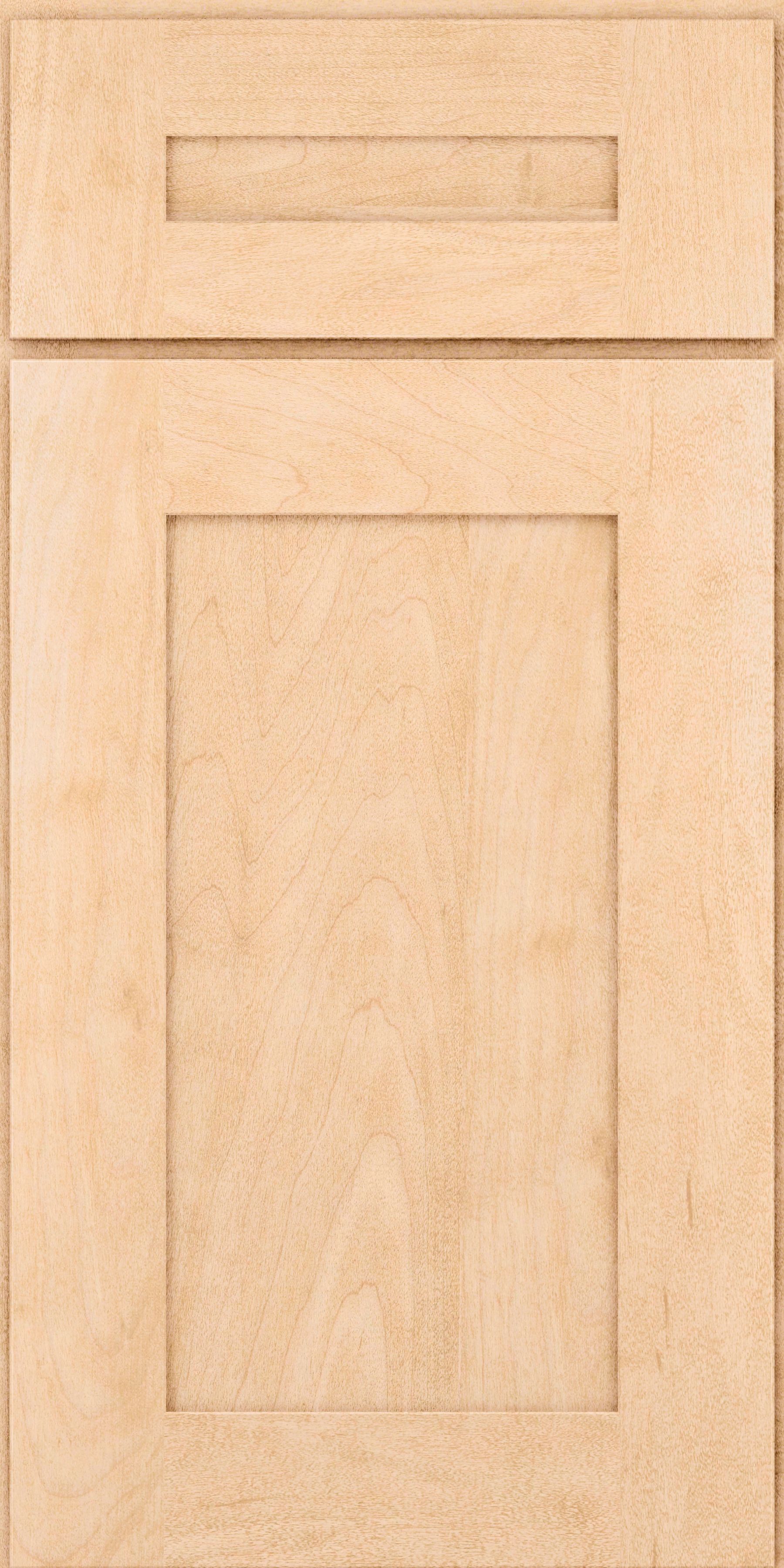Why choose Maple cabinets? For starters, Maple is a go-to species for kitchen and bath cabinets because it offers impressive durability. In fact, Maple scores so well for hardness and strength that 29 out of 30 NBA arenas use it for their basketball courts. And because Maple trees grow in such great abundance in North America (see the leaf on Canada’s flag), Maple is a moderately priced option for cabinetry. But there are even more Maple wood characteristics we think you’ll find attractive.

KraftMaid Shaker-style cabinet door in Natural finish showing light, creamy undertones and smooth uniform woodgrain of Maple species
Maple is prized for having a fine and generally straight woodgrain pattern with little variation or defects. Once sanded, Maple is nearly free of any grain texture at all. Together, this consistent appearance and uniformly smooth surface makes Maple ideal for designs where a refined, sleek, or simple look is the goal – like Modern spaces with slab door styles or in rooms that will feature a paint finish.
For more rustic designs, consider Rustic Maple doors. This grade of Maple lumber has more color variation, burls and knots than standard Maple to give cabinets additional character.
Maple is light-colored hardwood with creamy, off-white, or ivory undertones that will slightly darken with exposure to light and oxygen. With time, Maple will take on more of a honey-golden patina.
Because Maple has a light and neutral color, it’s a true chameleon when you apply stains. It can go dark or light without noticeably shifting the stain color. That means different stains can make Maple look like more expensive or exotic species:
The smoothness of Maple makes it ideal for paint too. You’ll hide the natural color and grain, but you’ll get amazing color with an even finish that’s silky to the touch.
Maple is considered a North American hardwood based on the distinction of it being a deciduous, flowering tree versus a needle-bearing softwood conifer.
When most people hear the term hardwood, they think of strength and durability – the literal hardness of the wood – not the biological type of tree. Look to the Janka Hardness Rating to measure how well a wood species can stand up to dings and dents of real life.
Here’s how Maple compares to a few other common wood species you might find in and around your home. The higher the Janka rating number, the harder the wood:
| SPECIES | CLASSIFICATION | JANKA HARDNESS RATING |
|---|---|---|
| Red Mahogany | Hardwood | 2,697 |
| Teak | Hardwood | 2,330 |
| Hickory | Hardwood | 1,820 |
| Hard Maple | Hardwood | 1,450 |
| Red Oak | Hardwood | 1,290 |
| Cherry | Hardwood | 995 |
| Southern Yellow Pine | Softwood | 870 |
| Alder | Hardwood | 590 |
| Eastern White Pine | Softwood | 380 |
| Balsa | Hardwood | 70 |
With a Janka Hardness Rating of 1,450, Maple is among the hardest, most durable species we offer. Even the most active homes can have confidence that Maple cabinets will stand up well to lots of use and occasional abuse. And, like all KraftMaid cabinets, they come with a Lifetime Limited Warranty.